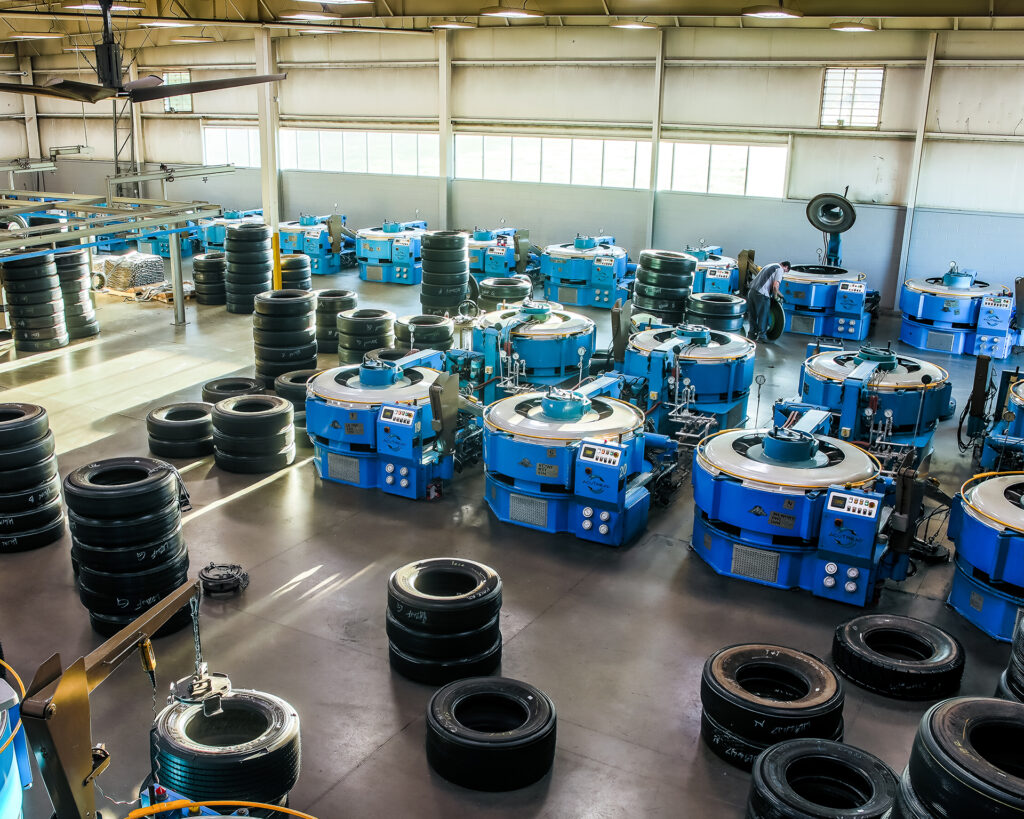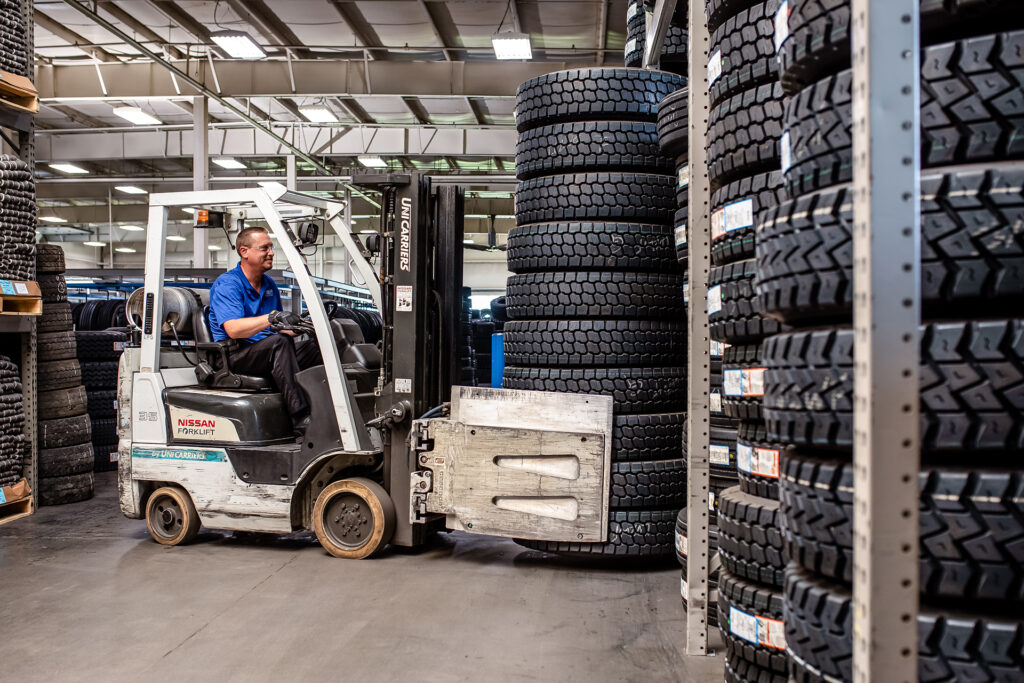
With so many myths surrounding retreaded tires, it can be hard to know what’s true. To help you navigate the myths and facts, we’ve boiled them down to these four categories: Safety, Performance & Appearance, Cost & Savings, and Manufacturing. Keep reading to discover all of the retreading benefits you might just be missing out on!

Truth: Premium tire casings remanufactured with state-of-the-art retreading processes are just as safe as new tires. If you’ve ever wondered, “Are retread tires safe?,” just take a look at the statistics compiled by the U.S. Department of Transportation. The numbers confirm that almost all tire-related accidents involving commercial trucks are caused by bald, misaligned, and underinflated tires. Poor tire maintenance is the only real threat to your safety on the road.
Truth: The remanufacturing process for a premium retreaded tire meets the same standards as new tire manufacturing processes. In fact, mold cure retreading processes like that of AcuTread® follow many of the same steps. In addition, retreaded tires are manufactured with only certified materials and undergo multiple vigorous inspections. Held to the same standards as brand-new tires, remanufactured tires are not “more prone to failure” than new tires.
Truth: Premium retreaded tires are perfectly legal—they always have been! And with new cutting-edge retreading equipment and manufacturing methods that are almost identical to the way the world’s leading manufacturers produce new tires, mold-cure retreaded tires have significantly improved in recent years. Retreads are even used by many of the commercial vehicles you rely on today.
“Emergency vehicles and school buses, which carry the most precious cargo in the world, operate safely on retreaded tires. They are used with the same reliability and performance as new tires on emergency vehicles, trucking fleets, commercial aircrafts, and time-sensitive operations like UPS, FedEx, and the USPS, all while cutting costs significantly,” says David Stevens of TRIB.
Truth: The rubber tire debris you see on the side of the road is actually from both new and retreaded tires. Why is this? Tire abuse, overloading, and underinflation are the true culprits, which means it has nothing to do with retreads specifically and everything to do with proper tire care.

Truth: Premium tire casings remanufactured with advanced retreading processes can perform as well as new tires—if not better. With matched diameters, strong rubber adhesion, contoured treads, full-depth siping, and custom rubber compounds, AcuTread® products are designed to offer superior traction, long wear, fuel efficiency, and cut resistance.
Truth: Remanufactured tires have come a long way, now rivaling new tires with some of the most fuel-efficient tires on the market. Many different retread makes and models meet the EPA’s standards and the AcuTread® product is no exception! View our low rolling resistance models that meet the United States Environmental Protection Agency’s requirements for size, performance, and testing.
Learn more about reducing your carbon footprint with remanufactured tires.
Truth: The belief that heat will “cause the bond to fail” on retreaded tires is unfounded. While it is true that extreme heat is not good for any tire, new or retreaded, that has more to do with running underinflated tires and causing heat buildup.
Because premium retreaded tires are held to the same standards as brand-new tires, you can expect the same quality and performance from a premium remanufactured tire. At AcuTread®, our products are engineered with full-depth siping, matched diameters, custom rubber compounds, and very high adhesion values. These “new tire” features help to reduce heat build-up.

Truth: Advancements in retreading technology, from tread designs to compounds, mean that you can expect retreaded tires to last as long as new tires do. And when you choose AcuTread®, our specially formulated rubber compounds and properly buffed casing dimensions provide you superior traction and longer wear.
Truth: Remanufactured tires are designed to be driven at the same legal speeds as new tires. With the same comfort, safety, and quality, retread tires will ride as good as new—if not better!
Truth: When it comes to appearance and aesthetics, tires that are remanufactured with advanced retreading processes can both look and perform as well as new tires.
AcuTread® uses a highly advanced mold curing process that is almost identical to the way new tires are manufactured. By applying uncured rubber compounds to a premium tire casing and curing it, we are able to mold the flexible rubber with a brand-new tread pattern. This produces a product that both looks and feels like a new tire. See for yourself!
Learn more about the mold cure retreading process.

Truth: Premium remanufactured tires save you money, costing about 30-50% less than the price of a quality new tire. But there’s even more to consider when it comes to evaluating your cost savings with retreading. Extend your tire’s lifespan, buy fewer tires, and go green all while getting the same level of safety and quality as new tires.
Learn more about the long-term cost benefits of retreading.
Truth: Buying premium tires and retreading their high-quality casings multiple times will bring you lower overall tire costs than buying low-cost and low-quality import tires.
Getting a brand-new import tire for such a low price may seem appealing to smaller fleets looking for a low-barrier entry to the market. However, don’t be fooled by the low price tag. Cheap tire imports often come without standardized testing and crucial data regarding rolling resistance and tire wear performance. Instead, invest in a high-quality premium tire and retread your casings multiple times to reduce long-term costs.
Learn why investing in premium retreads is better than investing in low-cost import tires.

Truth: Remanufactured tires are considered more environmentally friendly than new tires, and for good reason. Just take a look at these numbers:
• Retreading uses 68% less energy than manufacturing a brand-new tire.
• Retreading uses about 15 fewer gallons of oil per tire than new-tire manufacturing.
• Retreading reduces CO2 emissions by 30% when compared to new-tire manufacturing.
• Retreading delivers 1.4 billion pounds of landfill avoidance annually.
Going above and beyond your average retread plant, the AcuTread® mold cure remanufacturing process works to keep rubber waste at a minimum.
While the precure retreading process can produce more waste with unusable roll-ends, the mold cure retreading process utilizes a continuous, splice-free rubber application. Not to mention, we also collect and recycle any excess rubber buffings and end-of-life tires for use in other products like rubber mats, tire-derived fuel, and turf fields.
Not all retreads are created equal. Just like poorly manufactured tires, poorly retreaded tires have a higher likelihood of failing. That’s why it’s important to find a retread partner you can trust and a reliable retreading process that produces high-quality, premium products every time.
We developed the AcuTread® process to manufacture retreads that are designed expertly for safety, uniformity, reduced heat buildup, and longer tread life.
Learn more about choosing a retread partner from our buyer’s guide.

We have dealers located across Michigan, Illinois, Indiana, Ohio, Kentucky, Tennessee, and Arkansas. Find an AcuTread® dealer near you or contact us to learn more about the AcuTread® difference.
Contact us for more information about our products, remanufacturing process, facilities, or solutions for your fleet.
Website by Northbound Studio